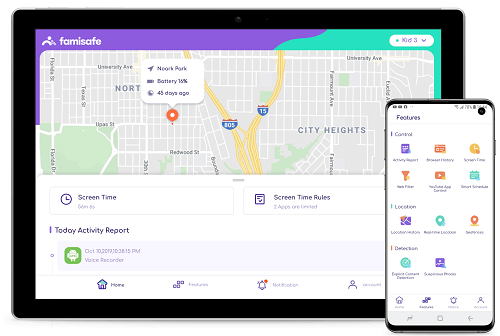
With the rise of CGI influencers, more and more parents are trying to know what CGI Influencers are. CGI influencers are new social media stars, made famous by their realistic computer-generated appearances. CGI influencers are created by CGI artists, who use special effects to make them look like real people. Some parents worry that these virtual stars will have a negative impact on their children, but experts say that CGI influencers can be a positive force in kids' lives. Some people believe that CGI influencers are a fad that will soon disappear, but they are becoming more popular daily.
In this post, we will explore the pros and cons of CGI Influencers and help you decide if they are right for your family.
What Are CGI Influencers?
Let's start with a scenario that took place on December 4, 2019. A computer-generated individual named Kenna began an internship in product development at the famous cosmetics company Essence Cosmetics. She uploaded a photo of herself on her personal Instagram account with the caption, "First day at work, yay." The photo went viral, and media outlets worldwide began writing stories about Kenna. But, this is the case with most young adults starting their first internship. So, what made Kenna so special? The answer is simple: Kenna isn't a real person—she's CGI created with computer-generated imagery commissioned to help Essence Cosmetics launch a new cosmetics line.

Kenna is just one example of the growing trend of CGI influencers. CGI influencers are social media stars who have been created with the help of CGI technology. These computer-generated characters are becoming increasingly popular on social media platforms like Instagram and YouTube. As a result, CGI influencers often have large followings and are considered social media celebrities in their own right.
CGI (computer-generated imagery) is used to create CGI influencers for businesses to make their influencer marketing efforts more successful. Lil Miquela, Blawko, and Shudu are some of computers' most famous social media celebrities. They appear to be natural, walk and express emotions as humans do, becoming increasingly popular among fans and critics.
Take Lil Miquela (@lilmiquela), for example. She is a CGI influencer who has over three million followers on Instagram. Brands like Prada and Calvin Klein have used her to help market their products. CGI influencers are also becoming popular in the fashion industry. CGI models have been featured in magazines like Vogue and Elle and have even walked the runway at Fashion Week.

A study by researchers at the Toyohashi University of Technology concluded that humans might empathize with robots as they can with other people. In other words, CGI influencers are capable of forming emotional bonds with their fans.
This feeling may be used by companies that employ CGI influencers and models to help them profit from interaction and entice customers into buying their latest items. It's also good news for businesses looking to use CGI influencers to promote their products and services. CGI influencers can help companies to connect with consumers in a new and unique way.
CGI influencers are becoming increasingly popular with kids. CGI characters like Lil Miquela and Shudu have been designed to appeal to young people. They often post about topics relevant to kids, such as fashion, music, and pop culture. They can help kids connect with their peers and learn about the world around them.
However, some parents worry that CGI influencers may have a negative impact on their children. Some believe that CGI influencers are not good role models for kids because they are not real people and are too perfect. Others worry that CGI influencers may encourage kids to spend too much time on social media.
Why Should Parents Worry About CGI Influencers?
According to a study conducted by internetmatters.org, two-thirds of parents (65%) are concerned that the lives shown in online vlogs provide their children with unrealistic expectations about reality. While half of the parents (50%) state they have trouble determining whether specific vlogs or vloggers are appropriate for their children. That makes sense, given companies are using CGI influencers to help promote their products, which can create a sense of FOMO (fear of missing out) in young people.
In addition, CGI influencers may harm kids for several reasons.
First, CGI influencers are not real people. They are computer-generated images that have been designed to look like real people. CGI influencers often show an unrealistic view of the world. For example, they may show unattainable homes, clothes, lifestyles, and bodies. Second, CGI influencers can be used by companies to sell products to kids. For example, CGI influencers may promote toys or clothes that kids will want to buy.

The problem is that kids can't always distinguish between a real Instagram celebrity and a fake one. While influencers like Noonoouri (@noonoouri) appear more like anime characters than people, others look strikingly humanistic such as shudu.gram (@shudu.gram).
It might become even more perplexing when computer-generated influencers are alongside real people for a photo shoot. They're more gorgeous than actual models on-set because they're pixel-perfect, putting unrealistic beauty standards on display, which humans can't attain. CGI influencers can also negatively impact kids' mental health. For example, kids may compare themselves to CGI influencers and feel that they are not good enough.

However, identifying CGI influencers as "not real" is key to helping kids understand that they don't need to compare themselves to these virtual celebrities. Experts say that CGI influencers can be a positive force in kids' lives if parents take the time to explain that they are not real people.
"If I kept her a secret, the majority of people might think she's a real person," Cameron-James Wilson, the creator of @shudu.gram, told USA Today about his influencer's identity. "There needs to be a level of awareness about that with technology. I think that has the potential to be abused." But Wilson added that both types of influencers could coexist — as long as they're each marketed exactly as they are.
What Can Parents Do About Kids And CGI Influencers?
If you're a parent concerned about CGI influencers, there are some things you can do to help your child. First, talk to your child about CGI influencers and explain that they are not real people. Second, explain that the lives of CGI influencers are often not realistic. Third, help your child find other role models they can admire. Finally, encourage your child to be themselves and not compare themselves to CGI influencers.
Some experts believe that CGI influencers may have a positive impact on kids. They argue that CGI influencers can be good role models for kids because they often show positive messages. CGI influencers can also help kids connect with their peers and learn about the world around them. CGI influencers can also be a great source of inspiration for kids.
Parents should decide what is best for their children regarding CGI influencers. They should consider whether CGI influencers are appropriate for their children and whether they provide a positive or negative influence. CGI influencers are becoming more popular daily, so parents need to be aware of their potential impact on their children.
What Can Wondershare FamiSafe Do?

From the above discussion, we can certainly say that companies are using social media, including CGI influencer, to target children. As a result, it is becoming more difficult for parents to keep track of their children's online activity and protect them from the negative impact of CGI influencers.
If your kids are under 10, you should not allow them to follow CGI influencers, no matter what. Also, you should talk to them about CGI influencers and explain that they are not real people. You also should not allow your kids to use social media, and if you can't help it, you can use a parental control app like Wondershare FamiSafe.
FamiSafe can help you monitor your kid's online activity and protect them from the negative influence of CGI influencers. FamiSafe allows you to see your kid's search history, websites visited, and app usage. You can also set limits on screen time and track your kid's location. FamiSafe is a great tool for parents who want to keep their kids safe online.
You can watch the video below to learn how to check the websites your kids browsed with Wondershare FamiSafe:
Furthermore, FamiSafe allows you to block certain apps and websites, so your kids can't access them. You can also set up alerts so you'll be notified if your kid searches for something you're concerned about, such as whether they are getting involved in an inappropriate relationship with a CGI influencer. Besides, you can remotely track your child's online activity from your own device.
Overall, FamiSafe is a great tool for parents who want to keep their kids safe online.
Conclusion
CGI influencers are the new social media stars. It is impossible for anybody who actively uses social media to avoid them or not get influenced by them somehow. As a parent, getting educated about CGI influencers is the best way to protect your child from their negative influence. Teach your child that CGI Instagram stars are not real people and that their lives are often not realistic. Educate them about filters used in social media apps and the prevalence of 'deep fakes' so they can develop a healthy skepticism about social media content in general. Finally, encourage your child to be themselves and not compare their lives to the CGI characters they see on social media. CGI influencers are not going anywhere anytime soon, so it's important for parents to be aware of them and their influence.
